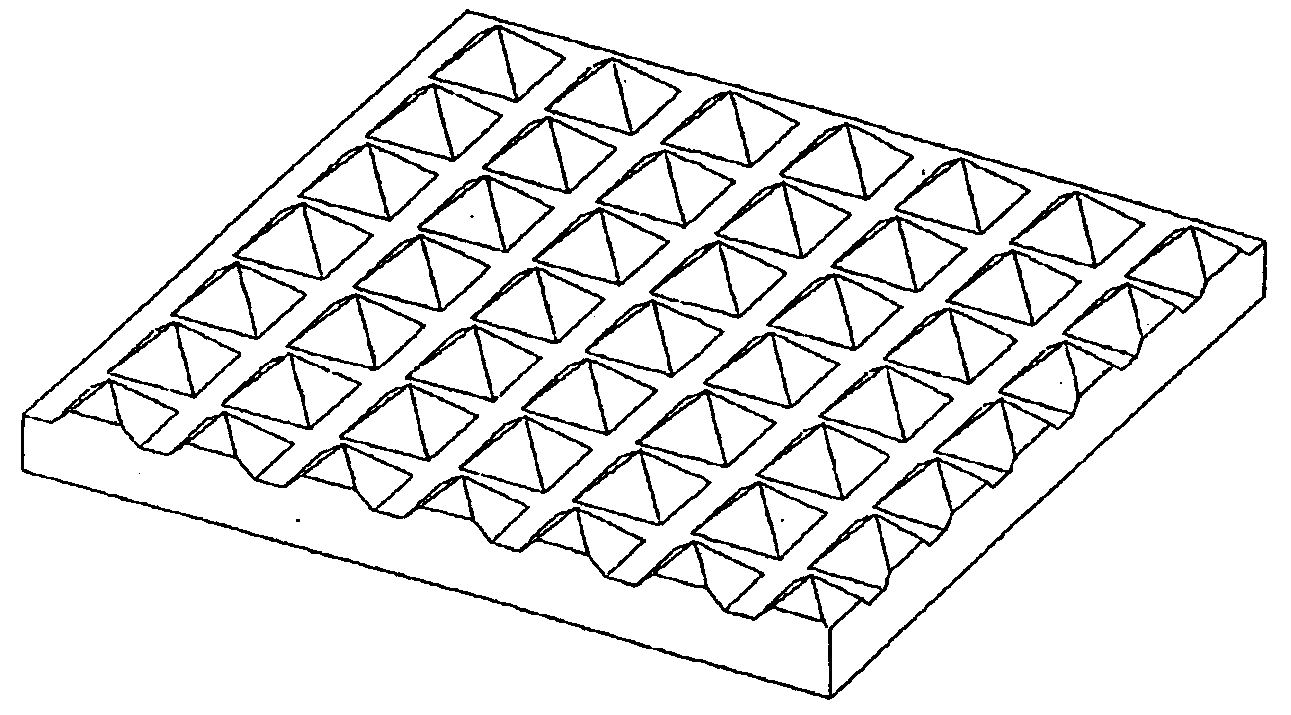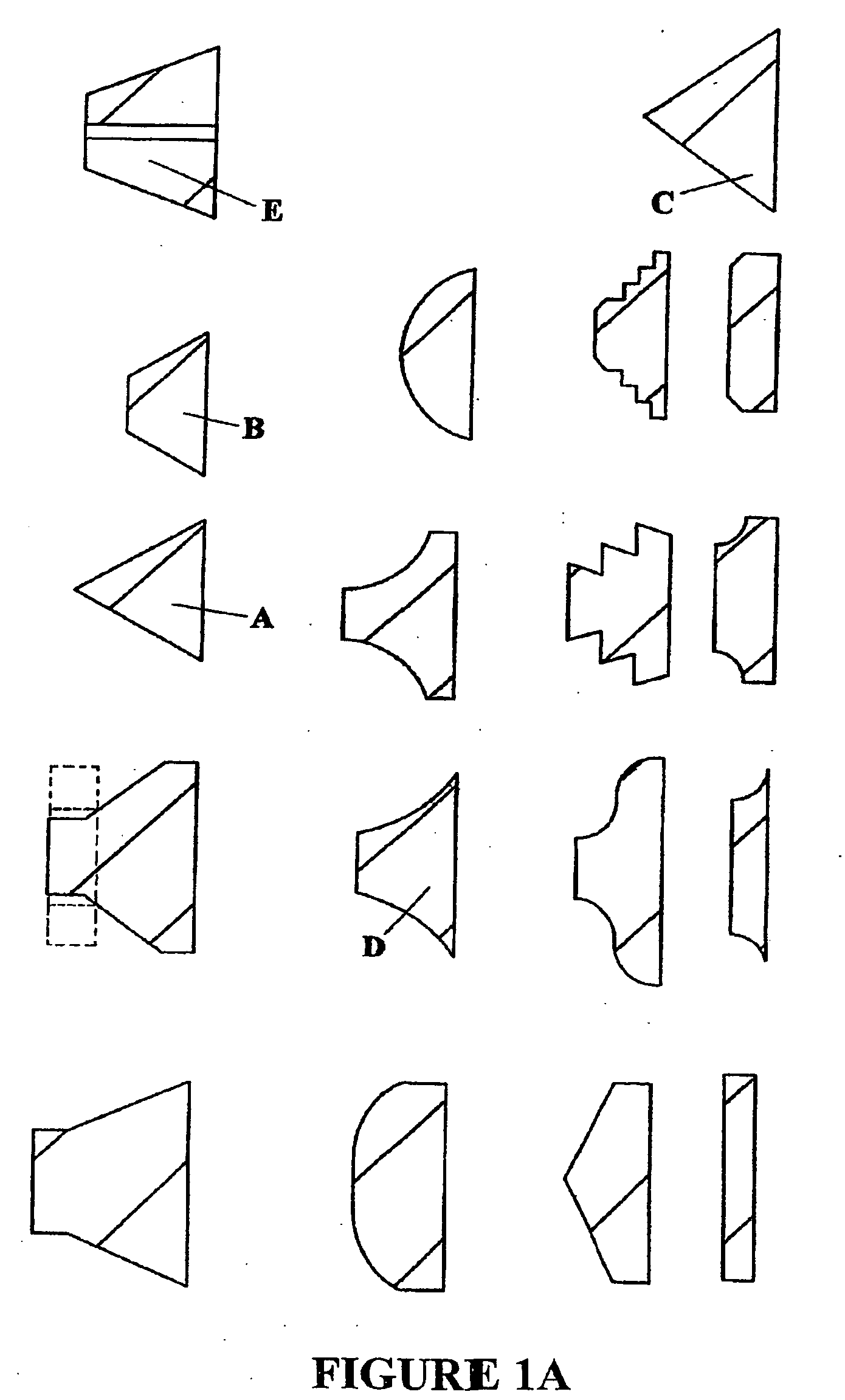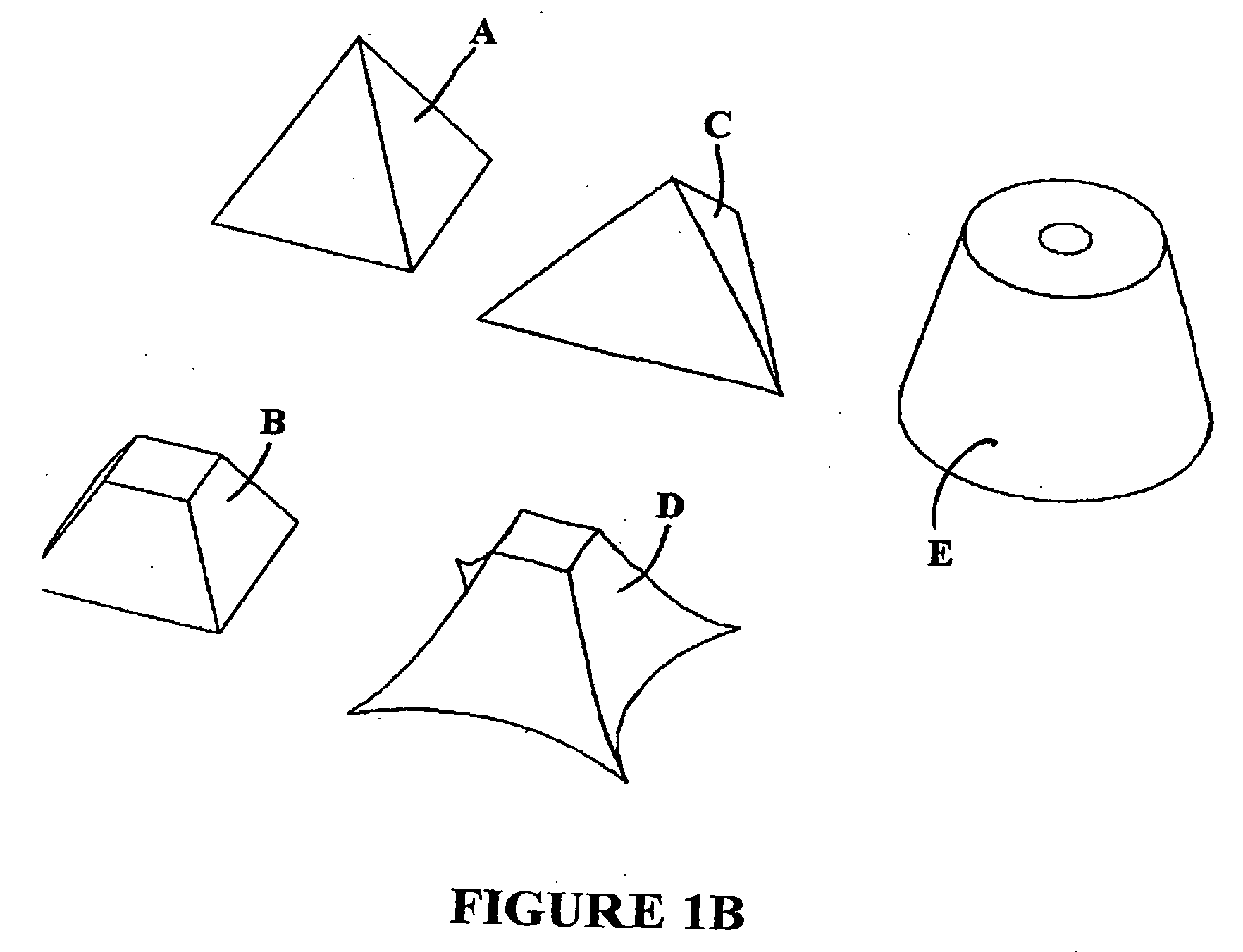Carrier body and method
a carrier body and cutting tool technology, applied in the direction of liquid surface applicators, coatings, metal material coating processes, etc., can solve the problems of affecting the performance of cutting tools, reducing toughness, and reducing tool li
- Summary
- Abstract
- Description
- Claims
- Application Information
AI Technical Summary
Benefits of technology
Problems solved by technology
Method used
Image
Examples
example 1
[0040] Four-sided pyramids with straight corners, see FIGS. 1A and 1B variant A, with a base of 10 mm side and a height of 7 mm were produced of the MAX phase material Ti3SiC2 having small amounts of impurities, hereafter called variant A-MAX, and of graphite, called variant A-graphite. The pyramids were positioned on a flat graphite tray with regularly positioned holes of diameter 3 mm. The pyramids were pre-coated with CVD and MTCVD layers of Ti(C,N)+Al203+TiN of a total thickness of 25 μm. Cemented carbide cutting inserts of geometry CNMG120408 for P25 application area were positioned on the every pyramid of the two variants. Totally 100 pyramids per variant were used.
[0041] CVD / MTCVD production-coating of Ti(C,N)+A1203+TiN with an approximately 15 μm total coating thickness was deposited on the cutting inserts.
[0042] After coating all cutting inserts were examined using a stereo microscope in 10×magnification for marks. The marks were classified with respect to: no visible mar...
example 2
[0045] Single-sided cemented carbide cutting inserts of geometry XOMX0908-ME06 with composition 91 wt. % WC−9 wt. % Co were used. Before deposition the uncoated substrates were cleaned.. A CVD production-coating of Ti(C,N)+Al203+TiN with an approximately 5 μm total coating thickness was deposited on the cutting inserts.
[0046] The cutting inserts were positioned directly on a flat tray, similar to the one in FIG. 1A down to the right but larger. The tray consisted of a graphite carrier body comprising essentially Ti3SiC2 having small amounts of impurities, variant A-MAX, and of graphite, variant A-graphite. The thickness of the sectors was 5 mm. The sectors had been pre-coated with a CVD and MTCVD coating of Ti(C,N)+Al203+TiN to a total coating thickness of 20 μm before the test in production coating. Totally 100 cutting inserts per variant were coated.
[0047] After production coating all cutting inserts were examined according to example 1.
[0048] Cutting inserts measured were coat...
PUM
| Property | Measurement | Unit |
|---|---|---|
| Thickness | aaaaa | aaaaa |
| Area | aaaaa | aaaaa |
Abstract
Description
Claims
Application Information
 Login to View More
Login to View More - R&D
- Intellectual Property
- Life Sciences
- Materials
- Tech Scout
- Unparalleled Data Quality
- Higher Quality Content
- 60% Fewer Hallucinations
Browse by: Latest US Patents, China's latest patents, Technical Efficacy Thesaurus, Application Domain, Technology Topic, Popular Technical Reports.
© 2025 PatSnap. All rights reserved.Legal|Privacy policy|Modern Slavery Act Transparency Statement|Sitemap|About US| Contact US: help@patsnap.com



